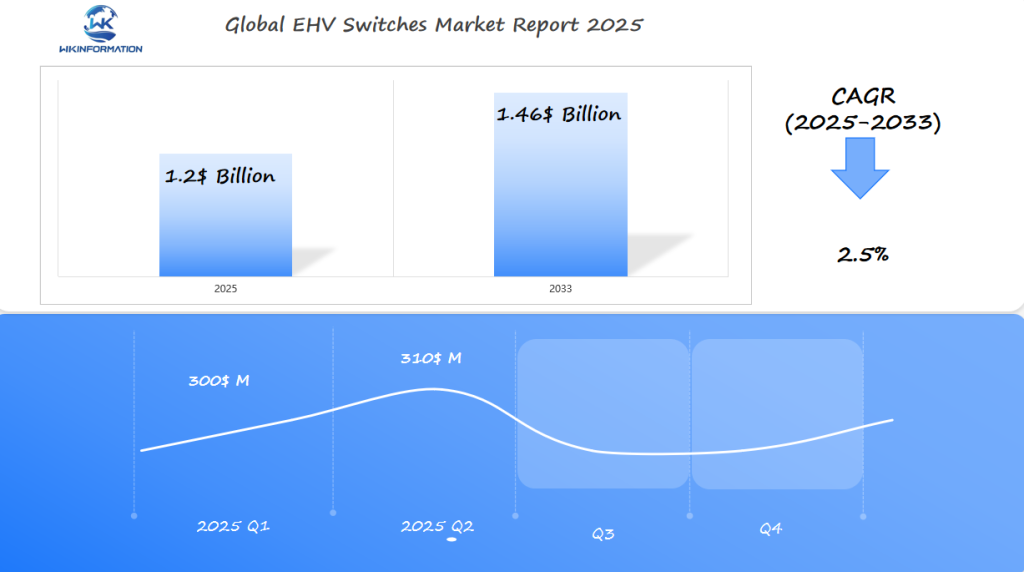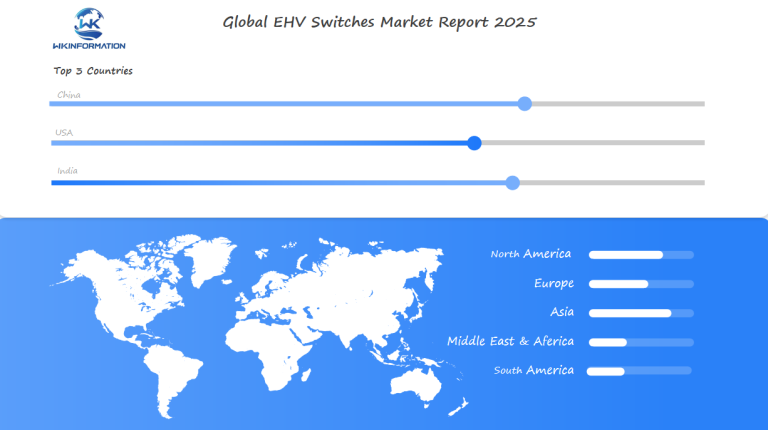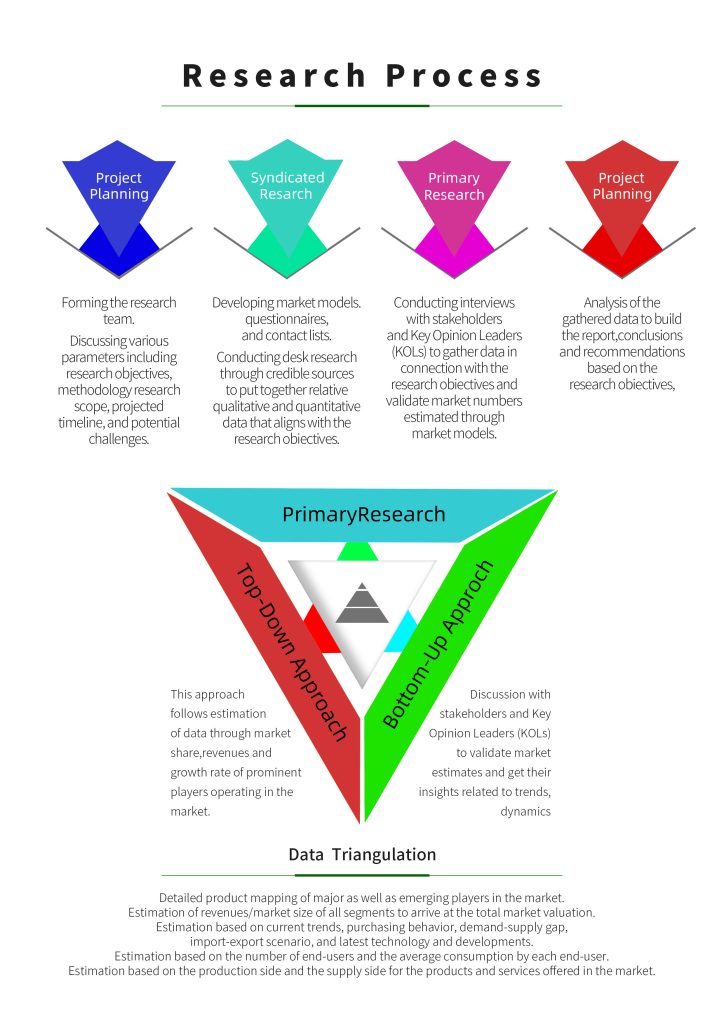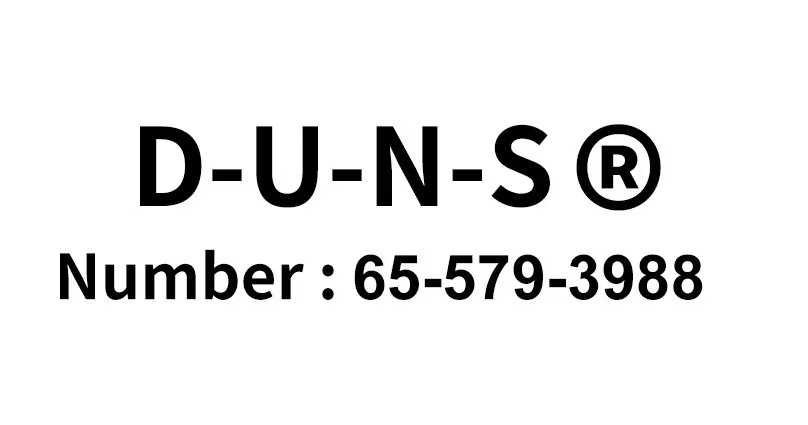2025 Global EHV Switches Market Insights Unlocking Opportunities in the US, China, and India with $1.2 Billion Potential
The EHV Switches Market is booming as the US, China, and India prioritize energy independence.
- Last Updated:
EHV Switches Market Forecast for Q1 and Q2 of 2025
The EHV Switches market is projected to reach USD 1.2 billion by 2025, growing at a steady CAGR of 2.5% from 2025 to 2033. The market is expected to reach approximately USD 300 million by the end of Q1 2025 and grow to around USD 310 million by the close of Q2 2025. The growth of the EHV Switches market will be driven by the expansion of electrical grids and the increasing demand for reliable power distribution systems.
The US, China, and India are key countries to watch, as they are investing heavily in upgrading their energy infrastructure to meet the demands of growing populations and industrialization. The US, with its focus on renewable energy integration and grid modernization, will contribute significantly to the market’s growth. China’s massive infrastructure projects and increasing urbanization will also drive demand for EHV switches. India, with its rapid industrialization and increasing electricity demand, is expected to play a significant role in shaping the market in the coming years.

EHV Switches Market Upstream and Downstream Industry Chain Analysis and Insights
The EHV switches supply chain has many layers, from raw materials to end-users. It shows how power transmission components and electrical equipment manufacturing affect the market.
Raw Material Suppliers and Component Manufacturers
At the start, we have suppliers of copper alloys, ceramic insulators, and special steel. Companies like Siemens and ABB use these to make high-voltage parts. But, global metal shortages can delay electrical equipment manufacturing.
- Key materials: High-strength aluminum, epoxy resins, and dielectric fluids
- Regional suppliers: Japan’s Furukawa Electric and Germany’s Heraeus supply critical raw materials
End-User Industries and Applications
Utilities and renewable energy projects drive demand. Solar farms and wind parks need power transmission components for high voltages. Companies like Duke Energy and NextEra buy EHV systems for grid strength.
Distribution Channels and Market Accessibility
EHV market distribution channels vary by region. In the U.S., direct sales are common. China uses state-owned distributors, while India has a mix of manufacturer networks and third-party traders. These choices influence prices and market reach.
Companies like GE Renewable Energy are trying to improve logistics. They place manufacturing sites near raw material sources to cut down on delays.
Trends Influencing the EHV Switches Market
The EHV market is moving fast, thanks to new ideas. We’re seeing smarter designs and greener solutions. These changes are making power grids better around the world.
Technological Advancements in Switch Design
Companies are using new materials like carbon fiber and SF6-free insulation. Next-gen switches use graphene composites to last longer and harm the environment less. Big names like ABB and Siemens are leading with new designs that cut maintenance time by 40%.
Integration of Smart Grid Technologies
- IoT sensors track data in real-time in smart EHV switches.
- AI algorithms spot problems before they happen.
- Remote systems make managing the grid easier for utilities.
Sustainability and Environmental Considerations
Rules like the EU’s SF6 phaseout are pushing for greener options. A 2024 study by Wood Mackenzie found green switches cut carbon emissions by 30%. Here’s a comparison of old vs. new:
| Aspect | Traditional Equipment | Eco-Friendly Alternatives |
|---|---|---|
| Environmental Impact | High greenhouse emissions | Reduced carbon footprint |
| Regulatory Compliance | Risk of non-compliance | Meets new regulations |
Companies like NextEra Energy are switching to meet ESG goals. As these trends grow, the EHV market drivers will focus on being efficient and green.
Key Restrictions in the EHV Switches Market
The EHV switches market is growing, but EHV switches market challenges still exist. These challenges affect how the industry moves forward. Companies and utilities struggle with high voltage equipment regulations and electrical grid compliance standards.
Rules from NERC and IEC standards make companies spend a lot on certifications. Power infrastructure investment barriers also stop small businesses. They can’t afford to build advanced testing facilities. Engineers also hit a wall with material science, as switches often fail under high voltage.
- Compliance complexity: Differing national regulations delay product launches.
- Material science gaps: Insulation technology lags behind demand for 1,200 kV+ systems.
- Capital intensity: Plants cost $50M+ to build, deterring new entrants.
Despite these challenges, companies like Siemens and ABB are leading the way with modular designs. This helps cut down on certification costs. Yet, electrical grid compliance standards mean ongoing R&D spending, making profits hard to come by.

Geopolitical Impact on the EHV Switches Market
Global EHV switches are seeing big changes due to geopolitical factors in EHV market. Trade wars between big countries have made parts more expensive. This has changed how international trade of electrical equipment works.
Now, countries want to make things at home to avoid supply chain problems.
Trade Policies and Tariff Implications
Trade barriers, like tariffs on semiconductors, have made EHV production costlier. For example, US companies pay more for parts made in Asia. Meanwhile, Chinese companies get help from the government to sell more abroad.
This difference affects prices and market shares worldwide.
Regional Security Concerns Affecting Grid Infrastructure
Energy security worries lead to more local grid systems. Countries like India are making more EHV products at home. This way, they don’t rely so much on foreign technology.
Cybersecurity issues also make governments want to use only trusted suppliers. This affects energy security impact on grid infrastructure.
National Energy Independence Strategies
Power transmission politics play a big role in long-term plans. Here’s a look at what some key countries are doing:
| Country | Focus Area |
|---|---|
| United States | Domestic manufacturing grants |
| China | Export-driven production |
| India | Local R&D partnerships |
These changes show that politics and technology are both important. Finding the right balance between trade policies and energy security will shape the market by 2030.
Understanding the Segmentation of the EHV Switches Market
Getting into the EHV sector means knowing the EHV switches market segmentation. It shows how products are sorted by technical details and what users need.
Segmentation by Voltage Rating and Capacity
High voltage disconnect switches are sorted by voltage levels important for the grid. They range from 72.5kV for local networks to over 800kV for long-distance lines. Each level meets different energy needs.
Utilities choose high voltage disconnect switches for big substations. This is because they handle the power needs of whole regions.
Segmentation by Technology and Design Type
There’s a lot of tech diversity in the market. Gas-insulated EHV equipment is popular in cities where space is tight. It uses SF6 or nitrogen to save space.
On the other hand, air-insulated options are cheaper for rural areas. A recent report shows hybrid systems are growing fast. They mix gas and air insulation for the best results.
Segmentation by End-User and Application
- Power substation components are big in utility work, making up 60% of sales.
- Renewable energy projects use compact EHV switches to keep wind and solar farms stable.
- Industrial sites like refineries need tough designs for tough environments.
Key Applications for EHV Switches Driving Market Growth
EHV applications are changing the world’s energy systems. They are key in power transmission expansion and urban electrical infrastructure upgrades. EHV switches help deliver energy reliably in growing areas.
- Grid modernization in mature markets like the U.S. and rapid expansion in India/China.
- Renewable energy grid connection challenges requiring advanced switching solutions.
- Urban projects balancing infrastructure density with energy demands.
Transmission Grid Expansion Projects
Utilities worldwide are upgrading power transmission expansion networks. The U.S. spends $12 billion yearly on grid hardening. India aims to add 500 new substations by 2030.
ABB’s HVDC Light technology is popular for long-distance power transfers.
Renewable Energy Grid Connection
Wind and solar farms use EHV switches to stabilize output. Siemens’ latest designs handle 550 kV systems. These are crucial for California’s solar hubs and Texas wind farms.
Market data shows 40% of EHV demand growth is for renewable energy grid connection.
Urban Electrification Solutions
City planners focus on urban electrical infrastructure that fits limited spaces. Schneider Electric’s compact gas-insulated switches reduce footprint by 30%. They are perfect for NYC’s substations.
Smart grid sensors in Tokyo’s projects ensure real-time load balancing.
| Application | Key Feature | Example Project |
|---|---|---|
| Grid Expansion | High voltage capacity | India’s Green Energy Corridor |
| Renewables Integration | Dynamic load balancing | Arizona Solar Array Grid |
| Urban Projects | Space-efficient design | London Smart Grid Upgrade |
Global Insights into the EHV Switches Market
To understand the global EHV market distribution, we must look at regional trends. These trends shape both opportunities and challenges. The EHV Switches market is projected to reach USD 1.2 billion by 2025, growing at a steady CAGR of 2.5% from 2025 to 2033
Regional Market Share Analysis and Growth Patterns
Asia-Pacific is leading in cross-border power infrastructure projects. Europe is focusing on sustainability mandates. Africa and Southeast Asia are quickly adopting international power transmission standards to grow their grids.
Emerging Markets with High Growth Potential
- Emerging electrical markets in the Middle East are upgrading EHV for oil refining and industrial growth.
- Africa’s sub-Saharan regions are focusing on rural electrification, which is driving demand for affordable EHV solutions.
- Latin America is investing in interconnection projects to stabilize regional power supplies.
International Standards and Cross-Border Compatibility
The use of international power transmission standards like IEC 62278 ensures devices work together. Yet, regional differences in voltage ratings and safety protocols still exist. This creates barriers. Companies like ABB and Siemens are working together to make cross-border power infrastructure more compatible.

Analyzing the US EHV Switches Market
The US EHV switches market is key to upgrading the US electrical grid. It’s fueled by federal funds and private innovation. As utilities update old systems, billions are spent on grid strength. This part looks at how market trends match national energy aims.
Infrastructure Modernization Initiatives and Funding
Projects like the Grid Resilience and Innovation Act get $7.5 billion to update old gear. Utilities focus on EHV switch upgrades to meet North American electrical standards. Public and private teams work together to bring in new grid tech.
Domestic Manufacturing Capabilities and Innovation
American EHV switch manufacturers like Siemens Energy and General Electric are at the forefront. They create compact, IoT-enabled devices. Their work cuts down space needs by 40%, as shown by industry standards. They also use AI for predictive maintenance.
Regulatory Environment and Policy Influences
The US power transmission policy has three main regulators:
| Regulatory Body | Role | Focus Area |
|---|---|---|
| FERC | Oversees interstate transmission | Interconnection standards |
| NERC | Enforces reliability rules | Grid cybersecurity |
State rules for using more renewables also boost demand. Following North American electrical standards helps work well with Canada and Mexico.
China's Contribution to the EHV Switches Market
China has become a world leader in EHV switches. It uses Chinese EHV manufacturers and strategic investments to change the game. This part looks at how China’s progress in making and tech makes it a key player.
Manufacturing Scale and Export Capabilities
Chinese EHV makers lead in Asian electrical equipment exports. They use big production and low costs to their advantage. Their exports help projects in places like Southeast Asia and Africa.
Big names like State Grid Corporation and CRRC are now global suppliers. They provide switches for important projects.
Technological Advancements in Production
China’s China UHV technology has led to big improvements in high-voltage transmission. New tech cuts energy loss and makes grids more reliable. Some recent highlights include:
- Solid-state circuit breakers for smart grids
- AI-driven fault detection systems
- Lightweight composite materials for switch components
Strategic Investments and Global Influence
China power grid investments through the Belt and Road Initiative (BRI) are boosting UHV tech use. Some key projects are:
| Region | Key Project | Capacity |
|---|---|---|
| Central Asia | Kyrgyzstan-Uzbekistan UHV Line | 5GW |
| South Asia | Pakistan-China DC Link | 1,200 MW |
| Africa | Ethiopia-Djibouti Grid Expansion | 400 kV |
These efforts show China’s move from just being a player to setting the standard in EHV innovation.
The Future of India's EHV Switches Market
India is leading the way in EHV switches demand. It’s focusing on India power transmission growth and Indian electrical infrastructure development. The push for rural grid expansion and renewable energy projects is driving this growth. With over 450 GW of renewable targets by 2030, the need for advanced India renewable energy switches is clear.
Rapid Electrification and Rural Grid Expansion
Connecting 24×7 power to 28,000 villages under SAUBHAGYA has boosted demand for EHV infrastructure. Challenges like terrain and funding still exist, but progress is steady. Key projects include:
- Interstate transmission corridors linking remote regions
- Digitized grid monitoring systems
- Private sector investments in substation upgrades
Renewable Energy Integration Challenges
Integrating 175 GW+ renewables requires grid stability tools. Solar and wind farms need India renewable energy switches to handle variable generation. Key hurdles include:
| Challenge | Solution |
|---|---|
| Intermittent power supply | Smart inverters and storage interlocks |
| Grid congestion | Dynamic line rating systems |
Make in India Initiatives and Local Manufacturing
Domestic production targets under “Make in India” aim to reduce imports by 30% by 2025. Partnerships like ABB’s Tamil Nadu factory and Siemens Gamesa’s wind projects showcase this shift. Local manufacturers now supply 60% of domestic EHV needs.
India’s energy blueprint is rewriting regional dynamics. It blends traditional and renewable infrastructure. This makes India a global EHV innovation hub.
Future Development Insights for the EHV Switches Market
The EHV switches market is changing. Future designs will focus on being more efficient and green. New technologies like solid-state switches and superconducting materials could change how we transmit power.
Emerging Technologies and Innovation Pathways
New grid technology is breaking new ground. Key advancements include:
- Superconducting switches: They cut down energy loss in high-voltage systems
- Digital twins: They help simulate real-world performance for safer use
- AI-driven monitoring: They optimize maintenance for sustainable high voltage equipment
Predicted Market Evolution Through 2030
| Trend | Impact |
|---|---|
| Renewable energy integration | Drives demand for adaptable switchgear |
| Hydrogen infrastructure growth | Requires voltage systems compatible with new energy mixes |
| Microgrid expansion | Encourages modular switch designs |
Long-term Sustainability and Circular Economy Approaches
Companies are moving towards circular economy. For example:
- Using recyclable materials in switch components
- Remanufacturing programs to extend equipment lifespan
- Partnerships for end-of-life component recovery
These changes help meet global net-zero goals and keep the grid stable. Companies like ABB and Siemens are working on switches that can be recycled. This balance of innovation and environmental care will shape the future of energy infrastructure.
Competitive Analysis of the EHV Switches Market
The EHV switches market is highly competitive. Big names like ABB, Siemens, and GE lead the way. But, Chinese and Indian companies are catching up by making products cheaper.
-
Havells India Limited – India
-
Panasonic Holdings Corporation – Japan
-
ABB Limited – Switzerland
-
Salzer Electronics Limited – India
-
Schneider Electric SE – France
-
General Electric Company (GE) – United States
-
Opple Lighting Co., Ltd. – China
-
Delixi Electric Ltd. – China
-
Zhejiang Chint Electrics Co., Ltd. – China
-
Simon S.A.U. – Spain
Overall
| Report Metric | Details |
|---|---|
| Report Name | Global EHV Switches Market Report |
| Base Year | 2024 |
| Segment by Type |
· 72.5kV and above · 800kV and above |
| Segment by Application |
· Transmission grid |
| Geographies Covered |
· North America (United States, Canada) · Europe (Germany, France, UK, Italy, Russia) · Asia-Pacific (China, Japan, South Korea, Taiwan) · Southeast Asia (India) · Latin America (Mexico, Brazil) |
| Forecast units | USD million in value |
| Report coverage | Revenue and volume forecast, company share, competitive landscape, growth factors and trends |
The EHV (extra-high voltage) switches market is at the vanguard of the evolving global energy landscape. It is driven by the Trump administration’s commitment to energy independence. This commitment is expected to significantly increase demand for high-voltage switches that are both robust and reliable. Countries like the United States, China, and India are well-positioned to benefit from this growth. They will do so by embracing technological innovations and forming strategic partnerships.
The EHV switches market is brimming with investment opportunities for both domestic and international entities. The focus on smart grid integration, digital transformation, and sustainability is creating a fertile ground for disruptive solutions. These solutions aim to improve power transmission efficiency and reliability. As the world continues to prioritize energy independence, the EHV switches market will be crucial. It will facilitate the integration of renewable energy sources and the modernization of electrical grids globally.
Global EHV Switches Market Report (Can Read by Free sample) – Table of Contents
Chapter 1: EHV Switches Market Analysis Overview
- Competitive Forces Analysis (Porter’s Five Forces)
- Strategic Growth Assessment (Ansoff Matrix)
- Industry Value Chain Insights
- Regional Trends and Key Market Drivers
- EHV Switches Market Segmentation Overview
Chapter 2: Competitive Landscape
- Global EHV Switchesplayers and Regional Insights
- Key Players and Market Share Analysis
- Sales Trends of Leading Companies
- Year-on-Year Performance Insights
- Competitive Strategies and Market Positioning
- Key Differentiators and Strategic Moves
Chapter 3: EHV Switches Market Segmentation Analysis
- Key Data and Visual Insights
- Trends, Growth Rates, and Drivers
- Segment Dynamics and Insights
- Detailed Market Analysis by Segment
Chapter 4: Regional Market Performance
- Consumer Trends by Region
- Historical Data and Growth Forecasts
- Regional Growth Factors
- Economic, Demographic, and Technological Impacts
- Challenges and Opportunities in Key Regions
- Regional Trends and Market Shifts
- Key Cities and High-Demand Areas
Chapter 5: EHV Switches Emerging and Untapped Markets
- Growth Potential in Secondary Regions
- Trends, Challenges, and Opportunities
Chapter 6: Product and Application Segmentation
- Product Types and Innovation Trends
- Application-Based Market Insights
Chapter 7: EHV Switches Consumer Insights
- Demographics and Buying Behaviors
- Target Audience Profiles
Chapter 8: Key Findings and Recommendations
- Summary of EHV Switches Market Insights
- Actionable Recommendations for Stakeholders

Access the study in MULTIPLEFORMATS
Didn’t find what you’re looking for?
TALK TO OUR ANALYST TEAM
Need something within your budget?
NO WORRIES! WE GOT YOU COVERED!
Call us on: +1-866-739-3133
Email: infor@wkinformation.com
What are EHV switches and why are they important?
EHV switches, or Extra High Voltage switches, are key in power transmission. They manage electrical flow safely at high voltages. This ensures energy is sent efficiently over long distances to meet demand.
How does the EHV switches market differ in the US, China, and India?
The EHV switches market varies by region. The US focuses on modernizing, China leads in manufacturing, and India is rapidly expanding its electrification.
What trends are currently influencing the EHV switches market?
Trends include smart grid technologies and sustainable solutions. SF6-free designs are also gaining popularity for environmental reasons.
What are the primary applications driving the demand for EHV switches?
Demand is driven by transmission grid expansion, renewable energy integration, and urban electrification. These are key for a modern energy infrastructure.
What are the notable challenges within the EHV switches market?
Challenges include complex regulations, technical limitations, and financial barriers. These hurdles make it hard for new players to enter.
How does geopolitical tension affect the EHV switches market?
Tensions can disrupt supply chains and pricing. Trade policies and tariffs are crucial in determining market access and competitiveness.
What future trends should we expect in the EHV switches market?
Expect emerging technologies like solid-state switches and sustainable designs. Advancements will aim to improve reliability and efficiency.
Who are the leading players in the EHV switches market?
Leading players include ABB, Siemens, General Electric, and Schneider Electric. They bring unique technologies and strategies to the market.
Why is India’s market for EHV switches growing rapidly?
India’s market is growing due to its electrification goals and renewable energy needs. The “Make in India” initiative also supports local manufacturing.
What role do international standards play in the EHV switches market?
International standards like IEC and IEEE ensure product uniformity. They help with cross-border trade and compatibility.


